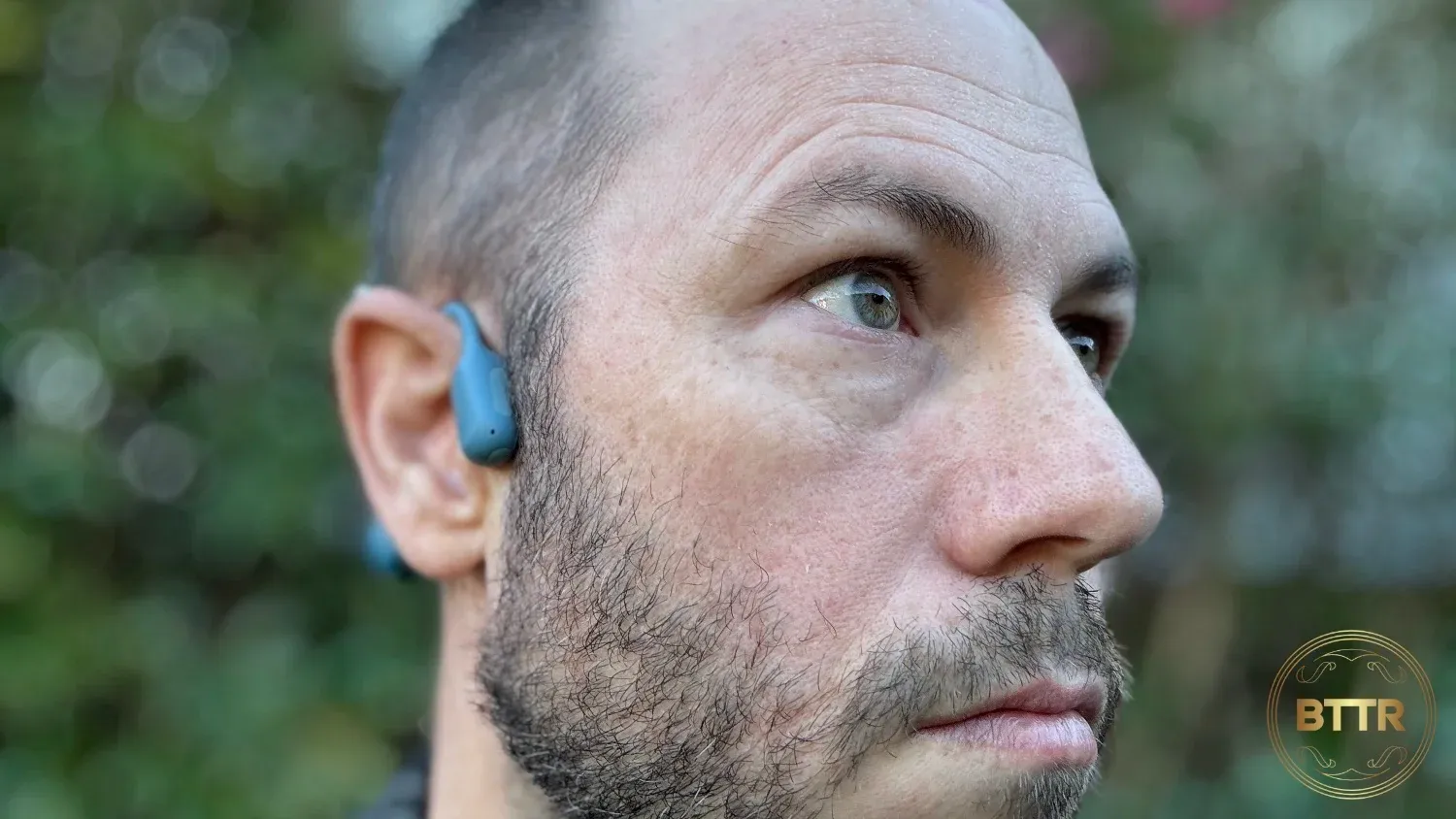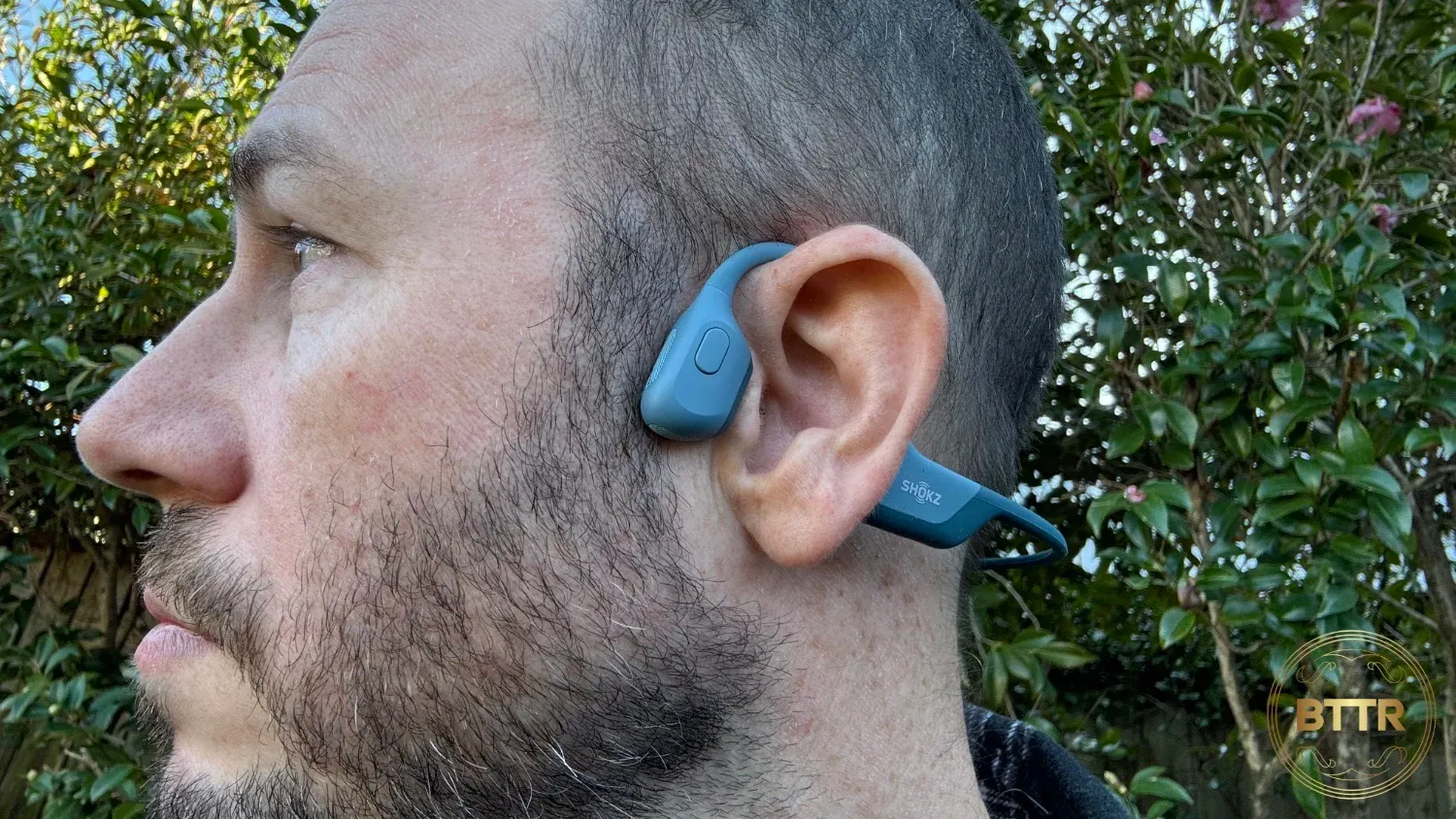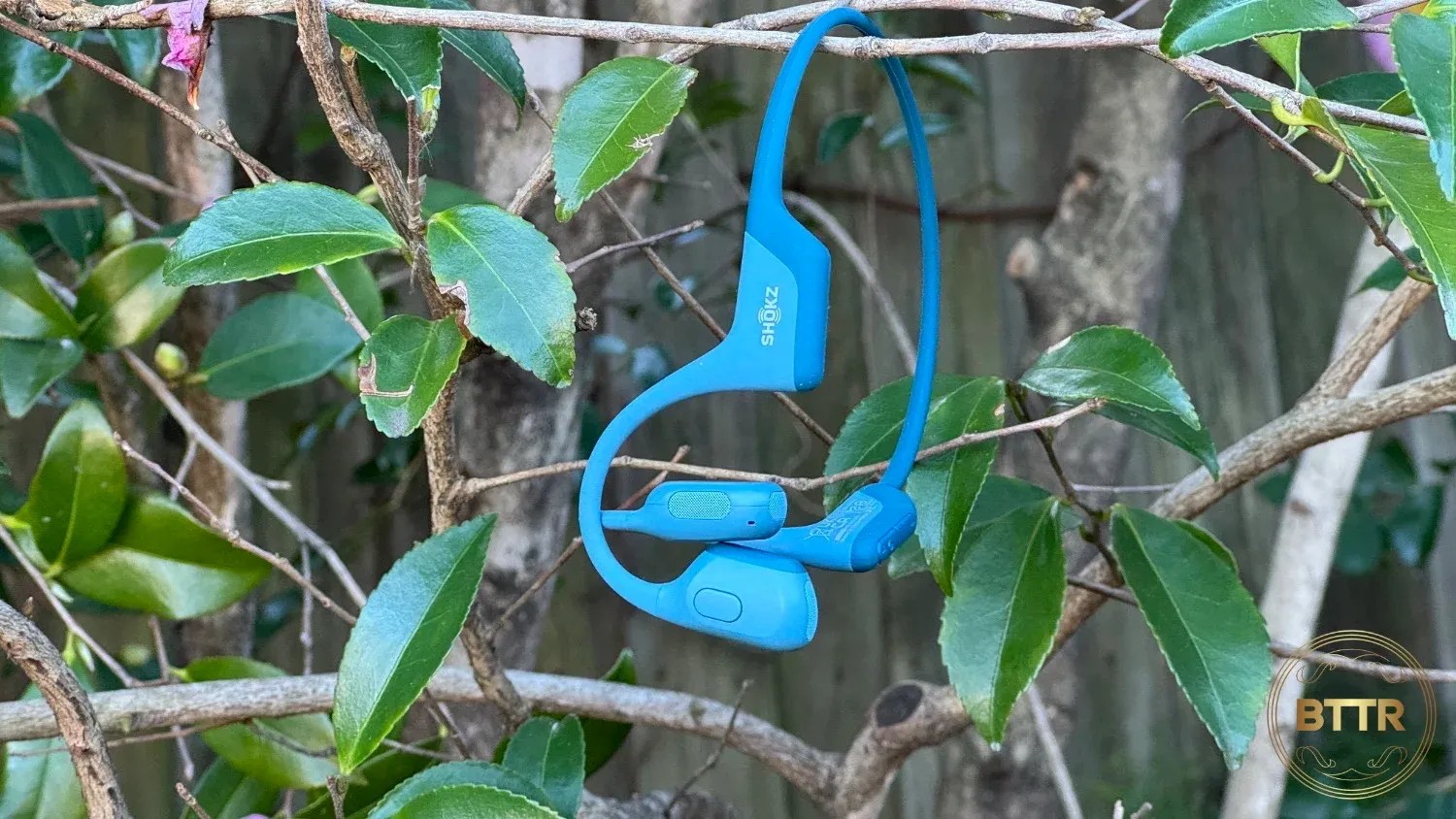Shokz Openrun Pro review: Running forwards
The Shokz OpenRun Pro use bone conduction for a respectable sound and improved safety, but why are they still using proprietary charging cables in 2024?

BTTR is independent, but we may earn money when you purchase through links on our site.
Pros
- Comfortable, secure fit
- Plenty of bass for bone conduction
- Fast charging
Cons
- Proprietary charger
- Bone conduction doesn't sound as good
- Sound leaks at higher volumes
Without a doubt, the biggest drawback I have with any pair of true wireless earphones I’ve ever tested is getting it to feel secure when I’m being active. No matter how good the fit, I’m always pushing the small earbud back into my ear cavity as they start to fall out.
The Shokz Openrun Pro is designed to solve this. It offers a combination of a wraparound design for a secure fit, as well as bone conduction technology to deliver the sound through your skull, rather than your ear canal.
Bone conduction is an impressive technology, and is definitely worth considering if you spend a lot of rime running or cycling and need to hear your surroundings.
It uses vibrations on your jaw to deliver the sound to your inner ear, so you can hear your music while still hearing your environment. It doesn’t deliver the same level of audio quality as in-ear earbuds, but that tradeoff is worth it if it means you don’t get hit by a car while crossing the road, right?
There are a few other tradeoffs here as well, including the ridiculous proprietary charging connector.
But for runners and cyclists, these are a great option for balancing safety and audio quality.

Design
Before Apple made true wireless earbuds popular, most in-ear Bluetooth headphones came with a strap that connected the two earbuds. Occasionally, it was adjustable, other times it was firm, and other times it kind of hung around the back of your neck.
The OpenRun Pro takes this design for its own. The bone conduction speakers sit fixed on the top part of your jaw in front of your ears, with the earphones wrapping around the back of your ear, firmly connecting behind your head.
The result is an extremely secure fit. I’ve jumped around, swung my head every direction and these headphones barely move. They certainly don’t pop away from your ear, falling to the ground like traditional earbuds do.
This design gives a fine balance between flexible and rigid. There’s definite movement with the earphones, but it’s quite robust and rigid in their structure.
Aside from the neck band, the other notable elements are a volume rocker on the bottom of the right ear, and a play/pause button on the side of the left ear.
A proprietary magnetic charging connector sits at the back of the right earbud as well. This is probably the most frustrating element of the OpenRun Pro. I assume it’s there to facilitate the IP55 dust and moisture resistance rating, but if you run out of battery without the charger, you are all out of luck.
Straight up — proprietary chargers are a curse, and ever since USB-C was introduced, there is no reason to include it. I get these bone conduction earbuds are a bit older now, but it’s still a red mark against its design.

Performance
Audio quality through bone conduction is never going to deliver the same depth of sound that an in-ear or over ear model will give.
But I was surprised by how reasonable music sounded through the OpenRun Pro.
Everything sounds kind of hollow, but well-balanced. It’s probably a tighter frequency range than traditional headphones, lacking a bit in the bass and the high end.
But there’s still a good amount of bass. If you crank up the volume (which you’ll most likely have to from time to time, but more on that in a moment), you can feel the vibrations in your jaw.
That can get a bit distracting in quieter settings, but when you’re out being active, the rhythm of a bass line vibrating through your head is a good focal point.
Because the OpenRun Pro doesn’t fill your ears, you can hear your surrounds clearly. This is great for safety while running or cycling, but it can also mean your music is difficult to hear in noisy environments.
You can turn it up to try to balance the music from the headphones and the external sound, but then you hit the next hurdle: noise leakage.
At volumes higher than about 60% your coworkers will hear what you’re listening to.
Battery life
Shokz claims you’ll get about 10 hours of battery life from the OpenRun Pro, and that runs pretty close to my testing.
You get a couple of low battery warnings spoken through the headset, so you’ll be able to run to a charger if you need to before it runs out. But then again, only if you remembered to bring that proprietary charger with you.
The good news is that the OpenRun Pros offer fast charging, so five minutes on the charger will get you about 1.5 hours of music playback.

Verdict
Bone conduction is a really cool technology for earphones, but there are sacrifices. While you get to hear your surroundings because these don’t block your ear canals, you sacrifice audio quality.
I wouldn’t recommend these for office workers or people wanting a pair of earbuds for a work environment. The Shokz Openfit are much better suited for that audience.
But for truly sporty people, the OpenRun Pro makes a lot of sense. They are secure, have good battery life, and are easy to control.
Buy the Shokz OpenRun Pro online

Shokz OpenRun Pro
The Shokz OpenRun Pro use bone conduction for a respectable sound and improved safety, but why are they still using proprietary charging cables in 2024?




